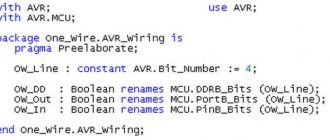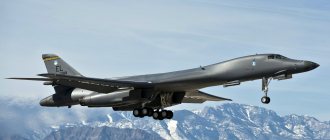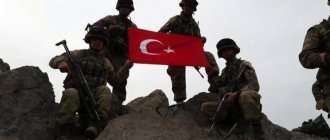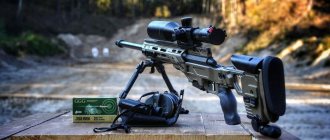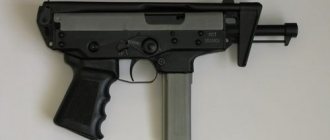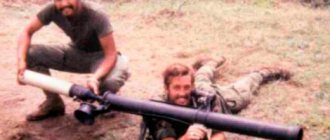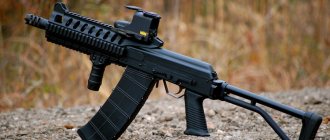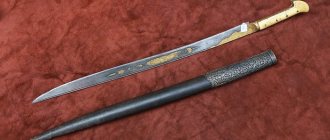Kh-35 anti-ship missile
The unification of weapons and military equipment is one of the main trends of recent times. The use of common components makes it possible to simplify the production of new systems, as well as reduce operating costs. An excellent example of this approach to creating new weapons is the Russian Kh-35 anti-ship missile. In various modifications, this product can be used by ships, airplanes, helicopters and even coastal missile systems. Such features of use significantly increase the combat potential of the X-35 missile. Initially, the X-35 anti-ship missile (ASM) was intended to arm missile boats and medium-displacement ships. It was proposed to use it as part of the Uran missile system. The development of such weapons was started in accordance with the resolution of the Council of Ministers of April 16, 1984. G.I. was appointed chief designer of the project. Khokhlov. The main work on the project was assigned to the Zvezda Design Bureau. To date, this organization has become part of the Tactical Missile Weapons Corporation (KTRV).
The goal of the X-35 project (3M24 missile) was to create a promising anti-ship missile system for arming boats and ships of small and medium displacement. The missile was to be used to destroy enemy ships and vessels with a displacement of up to 5 thousand tons. The technical specifications also required the possibility of a single launch and firing in one gulp. The new anti-ship missile system was to be used at any time of the day, in any weather conditions, as well as when the enemy uses electronic warfare and air defense systems.
The X-35 missile was built according to a normal aerodynamic design with an X-shaped wing and tail. The outer surface of the rocket body is formed by several cylinders of different diameters. The middle and tail parts of the hull are made asymmetrical: in the lower part there is a special nacelle, in the front part of which there is an air intake for the main engine. Also, the basic version of the X-35 rocket included a solid-fuel booster. The latter had a cylindrical body and was equipped with a tail that folded out at the start.
The X-35 anti-ship missile has a total length of 3.85 m. With the accelerator installed, the length of the rocket increases to 4.4 m. The maximum diameter of the body is 0.42 m. The unfolded wings have a span of 1.33 m. The launch weight of the rocket in the basic ship configuration is ( with accelerator) was 600 kg.
The 3M24 product had a layout typical of some missiles of this class. The homing head equipment was placed in the head part of the body. Behind it was a combat unit. In the middle part of the body there was a curved air intake channel, around which the fuel tank was “wrapped”. A turbojet engine was located in the tail of the hull. The free volumes of the hull and the lower gondola accommodated various equipment. The starting accelerator had an extremely simple design. Inside the cylindrical body, only a solid propellant rocket engine was placed.
When developing the X-35 missile, the need to reliably capture and hit a target was taken into account, regardless of the interference environment, which affected the architecture of the guidance systems. The new anti-ship missile system received a combined guidance system. During the cruise phase of the flight, the rocket was supposed to use an inertial navigation system and a radio altimeter. When entering the target area, it was proposed to turn on the active radar seeker, which was responsible for finding and hitting the target.
The X-35 project used the active radar homing head ARGS-35, developed at NPP Radar MMS. This system made it possible to detect and track a target. In addition, with the help of the ARGS-35 product, the missile was directly aimed at the detected target. The active radar seeker antenna was located in the head of the rocket under a radio-transparent fairing. A horizontal sector view of 90° width was provided (45° to the right and left of the longitudinal axis), vertical visibility: from -10° to +20°. The first modification of the ARGS-35 head had a target detection range of up to 20 km.
Diagram of the Kh-35 rocket. Figure Rbase.new-factoria.ru
Behind the homing head, a penetrating warhead weighing 145 kg was installed in the body of the Kh-35 missile. Due to the high-explosive fragmentation-incendiary action, the warhead used was supposed to ensure reliable destruction of ships and vessels with a displacement of less than 5 thousand tons. The warhead received a durable hull with relatively thick walls, which made it possible to penetrate the side of an enemy ship and cause an explosion inside, thereby causing maximum possible damage.
In the rear part of the X-35 anti-ship missile hull there is a turbojet turbojet engine TRDD-50AT with a thrust of 450 kgf. This engine is started using a squib and uses aviation kerosene. The power plant used allows the rocket to reach speeds of up to 280 m/s and fly to a range of 7 to 130 km. As part of the Uran complex, the 3M24 rocket is equipped with a solid fuel accelerator, with the help of which it leaves the transport and launch container. In this case, the main engine is started after the accelerator is reset.
The X-35 anti-ship missile system received a control system that ensures the greatest effectiveness of combat use. To do this, during the sustaining phase of the flight, before reaching the target area, the rocket must fly at an altitude of no more than 10-15 m above the crests of the waves. After the search for a target begins and while aiming at it, the flight altitude is reduced to 4 m. The low flight altitude in combination with the small EPR of the missile itself significantly reduces the likelihood of timely detection of the missile, and also makes it difficult to track and attack it using existing air defense systems.
Also, the operation of the X-35 family missiles is facilitated to a certain extent by automating launch preparation. Monitoring the condition of the product and entering a flight task are carried out automatically. All pre-launch procedures take no more than 1 minute.
The X-35 family of missiles, intended for use by ships and coastal missile systems, are supplied by the manufacturer in cylindrical transport and launch containers. Air-launched missiles are also supplied in containers, but are transported and launched from standard aircraft or helicopters.
Over the course of several months of work, employees of the Zvezda Design Bureau prepared a draft version of the X-35 project. During the review of the proposed documentation, certain problems were identified. In particular, the developed active radar seeker did not fully comply with the technical specifications. It took several years to complete all the modifications and improve the project. The first launch of an experimental rocket from a ground launcher was carried out only on November 5, 1985. Subsequently, several more prototype missiles were manufactured and tested during 1986. All these launches ended in failure.
The first regular launch with normal operation of all systems took place on January 29, 1987. After this, testing of the onboard systems continued. Until 1992, Zvezda Design Bureau and related enterprises conducted 13 test launches. According to some reports, the missiles used in these tests were equipped with a weight simulator of a radar seeker due to the lack of a full-fledged sample of such equipment. The development of the homing head was completed only in the early nineties.
Due to the collapse of the Soviet Union and a host of economic problems, the development of the X-35 project almost stopped. Over the next few years, the development organization was forced to carry out all the necessary work at its own expense. Among other things, this led to a sharp reduction in test launches: in 1992-97, only four experimental missiles were assembled and tested.
A sharp reduction in defense spending made it impossible to continue work and purchase finished missiles. For this reason, the first contract for the supply of Uran systems with X-35 missiles was concluded with a foreign customer. In the early nineties, the Indian military learned about the existence of a new project. After a series of negotiations in 1994, representatives of the Indian Navy ordered Russian-developed missile systems in the Uran-E export configuration.
The Uran-E ship-based missile system includes the Kh-35 missile with a TPK, a 3S-24E launcher, as well as a control system and a set of equipment for testing ammunition. The complex’s equipment can be installed on various boats and ships that have suitable characteristics. The launcher of the Uran-E complex is a metal frame with fastenings for transport and launch containers. The design of the launcher includes shock absorbers that reduce the load on the missiles during loading and during rough seas. The launcher is built in such a way that the missiles launch at an angle of 35° to the horizon.
Launcher 2S-24E. Photo Rbase.new-factoria.ru
The ship's automated control system, responsible for checking missiles, entering a flight mission and performing other operations, is manufactured in the form of two containers. This architecture of control systems allows them to be installed on any suitable ships and boats. Containers occupy an area of 15 sq.m. and 5 sq.m.
The Indian order made it possible to complete the necessary work and launch mass production of new anti-ship missiles. The first components of the Uran-E complex were transferred to the customer in 1996. On December 15 of the same year, work on integrating missiles into the weapons system of the destroyer INS Delhi (D61) was completed. Subsequently, several more Indian ships received similar equipment.
At the beginning of the 2000s, the situation with the financing of the Russian armed forces began to change for the better. The emergence of a corresponding opportunity made it possible to recall existing developments. In 2003, the Uran complex was tested, based on the results of which it was recommended for adoption. The equipment of this missile system can be installed on boats and ships of several types.
At the beginning of the 2000s, the development of the Bal coastal missile system continued and was completed, as part of which it was proposed to use the X-35 anti-ship missile system. The coastal complex is intended to monitor territorial waters and protect naval bases or other facilities. The Bal complex includes a set of various means that ensure timely detection and destruction of enemy ships.
The Bal coastal complex consists of several main components, made in the form of self-propelled vehicles based on the MAZ-7930 chassis. A self-propelled command and control and communications post (SCPUS) is responsible for tracking and searching for targets. The battery of the complex can include up to two such vehicles. Each battery also includes up to four self-propelled launchers (SPU). Each such combat vehicle has mounts for eight TPKs with missiles. Maintenance of the SPU is carried out by transport and reloading machines. In addition, the batteries are equipped with their own communication machines.
SPU complex "Bal"
The use of self-propelled vehicles allows you to quickly transfer all the assets of the “Bal” complex to a given area and begin combat work there with monitoring the specified water area. It is possible to deploy the complex at a distance of up to 10 km from the coastline. A typical battery can launch up to 32 missiles. The total ammunition load is 64 missiles.
In the mid-2000s, work on an aviation version of the X-35 missile was completed. For use as helicopter weapons, the X-35V anti-ship missile was proposed. Its main differences lie in a different starting accelerator. Its characteristics correspond to the intended method of launching from an aircraft, which has a relatively low flight speed. For aircraft, a rocket without a launch accelerator was proposed. Such an anti-ship missile had to be accelerated to the speed of turning on the main engine due to the carrier aircraft.
In 2011, an original design for a launcher for X-35 missiles was presented, disguised as a standard 20-foot container. At the same time, it was possible to place both four TPKs with missiles and a set of necessary control equipment inside the container. The prospects for such a project are not entirely clear. There has been no information about possible contracts for the supply of such weapons.
A further development of the Kh-35 missile was the Kh-35U product. Due to the introduction of some new components and assemblies, it was possible to double the maximum flight range. The Kh-35U can hit targets at ranges of up to 260 km from the launch point. Such characteristics are provided by the new engine and a different design of the air intake duct, thanks to which it was possible to increase the fuel supply.
In 2009, a modernized version of the Kh-35U missile, called Kh-35UE, was introduced, intended for delivery to foreign customers. After all the modifications, the launch weight of the rocket reached 670 kg. The dimensions remained the same. The engine and fuel tank taken from the X-35U provide the new anti-ship missile with a flight range of up to 260 km. According to some reports, a launch at a range of up to 300 km is possible. The most important innovation of the project was the update of guidance systems. The inertial navigation system was supplemented with a satellite one, and the active radar ARGS-35 was replaced with an active-passive radar seeker of the Gran-K type. The target detection range has been increased to 50 km.
Active radar seeker of the Kh-35E missile. Photo Ru.wikipedia.org
At the moment, the main operators of Kh-35 missiles and Uran family missile systems are Russia, India and Vietnam. To date, several hundred missiles have been assembled and transferred to the Russian Air Force and Navy, as well as the Indian and Vietnamese navies. Foreign customers have not yet shown interest in aircraft missiles, but are actively using ship-based missile systems.
Some foreign sources mention that Russian-designed Kh-35 missiles were copied by North Korean designers. Copies of the North Korean-made X-35 are allegedly operated in the DPRK and some foreign countries.
Like other anti-ship missiles, the X-35 family of weapons has advantages and disadvantages. The main advantage is considered to be a combined flight path with a low-altitude section on approach to the target. This feature of the Kh-35 missiles makes it difficult to detect and destroy them at a safe distance from the target ship. It should also be noted that there is a decent weight ratio between the missile and the warhead. The used radar seekers are capable of operating in jamming conditions, which increases the likelihood of hitting a target. The 145-kg high-explosive fragmentation incendiary warhead is designed to destroy ships with a displacement of up to 5 thousand tons. Thus, Kh-35 missiles can hit a wide range of warships and auxiliary vessels.
The flexibility of using Kh-35 missiles deserves special mention. They can be used as strike weapons on ships, aircraft, helicopters and specialized coastal systems. Thus, the military gets the opportunity to use a complex that most fully meets the requirements of the tactical situation.
The main disadvantage of the X-35 anti-ship missiles and systems using them is their narrow tactical niche. Missiles of this family can only be used to destroy surface targets. The specific flight trajectory and characteristics of the radar seeker do not allow the use of such weapons to attack ground targets. In the context of ship-based missile systems, this leads to the need to use separate systems to engage ground targets. In certain situations, the disadvantage may be the subsonic speed of the missile, which can increase the likelihood of its interception.
The first versions of the missiles had a flight range of up to 130 km, which imposed some restrictions on their use. There was a risk of approaching the target within range of a retaliatory strike with corresponding risks. This feature could be especially pronounced when launching missiles from aircraft that were forced to approach the target and risk being hit by air defense systems.
It should be noted that the Soviet/Russian project of the X-35 anti-ship missile system is to a certain extent similar to some foreign developments of a similar purpose. Shortly before the start of work on the X-35 and the Uranus complex, the Exocet missile was created in France, and the AGM/RGM/UGM-84 Harpoon product appeared in the United States. Kh-35, Exocet and Harpoon are subsonic missiles of relatively small dimensions and are also equipped with combined guidance systems.
Foreign analogues of the X-35 have been repeatedly used in various armed conflicts and have shown their capabilities. Exocet and Harpoon missiles have several major victories in several battles. The X-35 anti-ship missile system and its modifications have not yet been used in real armed conflicts. However, a comparison of the characteristics of various missiles and the experience of using foreign analogues suggests that the X-35 missiles are very effective weapons and can be considered one of the best examples of their class in the world.
Based on materials from the sites: https://rbase.new-factoria.ru/ https://army.lv/ https://bastion-karpenko.narod.ru/ https://ktrv.ru/ https://arms- expo.ru/
b NRKHVHE NR u-31 I EE LNKMHEMNYAMSHL APNYAYNL Y ZHEKKH, OPH YANGDYUMKHH u-35PEYUKKHGNBYUKYA OPKHMZHKHO YAYPSHRMNTSN OPHLEMEMKH I DUKEMKHU PSAEFEY, YU rrg OPYURKHVEYAYKH YANNRBERYARBNBUKN GYUDYUMMNLS OPH PUGPYUANRYE SDYUVMNI YULEPKHYUMYAYNI oip AGM- 84 “tsYUPOSM”, VRN X NASYAKNBHKN YAUNDMSHE REUMHVEYAYKHE PEYEMH. NYAMNBMNI GYUDYUVEI OPH YANGYUMHH u-35, PYUGPYUANRYUMMNI MU NYAMNBE YNPYUAEKEMNI YPSHKYURNI PYYERSH 3l24 “sPYUM”, ASHKN DNYARKHFEMKHE GYUTSNPKHGNMRMNI DUKEMNYARKH ONKERYU. dK SCHRNTSN MU PUYERE ASHK SYARYUMNBKEM SCHYNMNLHVMSHI LYUKNTSYUAYUPHRMSHI rpd, Yu B YNMYARPSYZHKH HYAONKEGNBUMYU YYULNKERMYU YNLONMNBYU: YNPOSYA ZHKHKHMDPHVEYAYNI TNPLSH I ONDTCHGEKFMSHL BNGDSUNGYUANPMKHYNL, MEYASYEE YPSHKN ANKENI OKNYUDH, ZHEKEMNONBNPNRMNE NOPEPEMKHE. dK YAMHFEMKH BEYAYU YNMYARPSYZHHH YNPOSYA BSHONKMEM YABYUPMSHL HG YUKCHLHMHEBSHU YAOKYUBNB KH ME HLEER SHYAOXYURYUZHNMMSHU PYUGZELNB.
b MEL PYUGLEYEMSH YUYRKHBMYU ptsyam OND PUDHNOPNGPYuVMSHL YAREIKNOKYYARKHYNBSHL NAREYUREKEL, ANPRNBU YAYUS, YANYARNYYYU HG KHMEPZHYUKEMNI YAKHYARELSH, BSHVHYAKHREK, PYUDKHNBSHYAN RNLEPIU X YUBRNOKHKNRYU, SCHMEPTSNAKNY, ANEBU VYUYARE BEYANL 145 YTS, RNKOKHBMSHHI AYUY (TSNPCHVEE - YUBKHYUZHNMMSHI YEPNYAHM) X LYUPYEBSHI DBKHTSUREKE. dКЪ UPYUMEMHЪ B RPYUMYAONPRMN-OSYAYNBSHU YNMREIMEPYU MU YNPYUAKYU H YNLOKEYYAE "aYUK" AEPETSNBNI NANPNMSH YPSHKN PUYERSH BSHONKMKNYAE YAYKYUDMSHL; B YUBKHYUZHNMMNL BYUPKHUMRE u-35 YPSHKN MEONDBHFMNE DK SOPNYEMKH YNMYARPSYZHKH X ONBSHYEMKH BEYANBNI NRDYUVH.
GYOOSYAY rpd ONYAKE NRDEKEMKH NR MNYAHREK (PUYAYPSRYU RSPAKHMSH) OPNKHGBNDHRYA OHPNYARYUPREPNL. u-35 MEYAER yuptsa-35 LYUYAYANI 47.5 YTS I GNMNI NAGNPYU OH YUGHLSRS +45 TsPYUDSYANB X +10 -20 TsPYUDSYANB ON BEPRKHYUKH, NAEYAOEVKHBUCHYSCH DUKEMNYARE GUUBYURYU 20 YL.
NYAYNKNVMN-TSTSYUYAMYU av GUYKCHVEMYU B OPNMHYUCHYCHYYNFSU, NAEYAOEVKHBUCHYKHI OPNAHRKHE NAHBYKH LYuYAYAHBMSHU YNPOSYAMSHU YNMYARPSYZHKHI X NANPSDNBYUMKH YNPYUAK AEG PYUGPS EEMKH YAYULNI av X EE "DNYARYUBYS" BN BMSRPEMMHE NRYAYEKH, TsDE PYUGPSYUCHYE DEYARBHE ASDER LYUYAKHLYUKEMSHL. oPHLEVYUREKEMN, VRN oyp MNBNTSN ONYNKEMKH ME PUYAYAVHRYUMSH MU ONPUFEMKHE YSLSKIRKHBMSHL DEIYARBHEL - APNMHPNBUMMSHE YNPYUAKH SKKH B OPNKNE, YU YAYULYU YSLSKIRKHBMYU YARPS BSHFKHTSUER KKHE SGHYKHI YAYERNP, SYARSOYU TTSYUYAMNLS SDYUPS KH NYAYNKNVMNLS ONRNYS OPH BMSRPEMMEL BGPSHBE. OSYAY u-35 LNFER NYASYYARBKREYAЪ B MUOPYUBKEMXX PUYAVERMNTSN LEYARYU YURYUSELNTSN YNPYUAK, OPNTHKE ONKERYU OPNTsPYULLLHPSERYAKH BYKCHVUER B YAAJ DNBNPNR MU ZHEKE, ONKHYAYN BSHI PEFHL (LUMEBP "GLEIYU" DK NAMYUPSFEMKH KH GUUBYURYU YNPYUAK ptsam), YAMHFEMKHE DK SLEMEYEMKH PUDHNKNYUZHNMMNI KH BKHGSYUKEMNI GYULERMNYARKH, ONDIAYNY X YURYUYS I AM OHYHPNBYUMKH, NYNAEMMN SHTTEYRKHBMSCH DK ONPYUFEMH LYUMEBPHPSCHYEI ZHEKH.
LUPEBUYU YAYNPNYARE ONKERYU u-35 - DNGBSYNBUYU, 240-270 L/YA, YU YAMKHFEMKHE SJGBKHLNYARKH DNYARKHTSYUERYA SLEMEYEMHEL BSHYANRSH OPNTKHK I LYUPYEBSHU 5-10 L DN 3-5 L M YU YNMEVMNL SVYARJE - PYYERU KERHR OPYYRHVEYAYH MU BSHYANRE TSPEAMEI BNKM. ON NZHEMYYUL SHTTEIRKHBMNYARKH, u-35 NAEYAOEVKHBUER SMHVRNFEMKHE YNPYUAK YKYUYAYU SHYALKHMEZH ME ANKEE, VELD DBSL ONOYUDYUMKHLH PUYER, DK ONRNOKEMKH LEMEKHU ZHEKEY DNYAR JURNVMN NDMNI PUYERSH. u-35 DNAFMSH ASHKKH BNIRKH B YANYARYUB BNNPSFEMKH ANKEHMYARBU SDYUPMSHU YYULNKERNB yublt, BYKCHVYU OYUKSAMSHE lHts-29y, LRSPLNBKHYH YaS-25rl, DYUKEMKHE OYURPSKEMSHE rS-142, YAONYANAMSHE MEYARKH DN 8 PUYER OND YPSHKNL, X BEPRNKERSH yu-27, yu-29 X yu -31yu-7. ndMUYN GYUDEPFYKH I PYUGPYUANRYNI GYURЪMSKH OPNZHEYAYA, X GYUYUGVKHY ME KHLEK BNGLNFMNYARKH OPNBEYARKH YANBLEYARMSHE HYAOSHRYUMKH u-35 BOKNRE DN PYYYAUYUYANCHGYU, ONYAKE VETSN OPNAKELSH EYE ANKEE GYURYFMNI UYUPYUREP.
yUBKHYUZHNMMSHE oip u-35 YANGDYUMSH B BEPRNKERMNL BYUPKHUMRE (KhGD. 78) YAN YARYUPRNBSHL pdrr, OPEDMYUGMYUVEMMNL DK yU-27, yYu-29 X yYU-31yu-7, YYULNKERMNL u-35s (KhGD. 35s), KHLHRYURNP ZHEKH xzh-35 ( YAKSFHR DK NASVEMH YNPYUAEKEMSHU PUYAVERNB YAPEDYARB obn). pYUGPYUAYURSHBUERYA RUY FE LNDEKE I REOKNBHGHNMMNI tsam.

